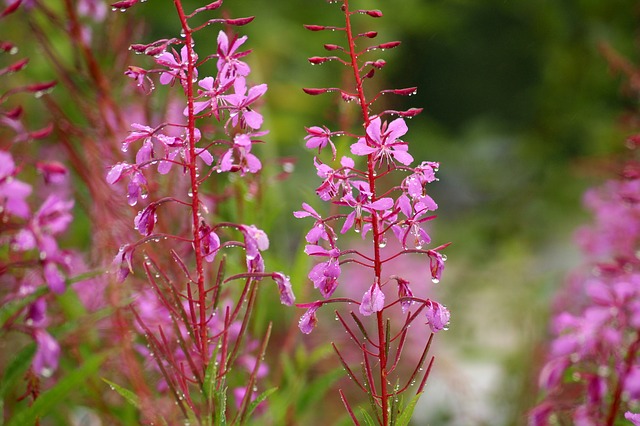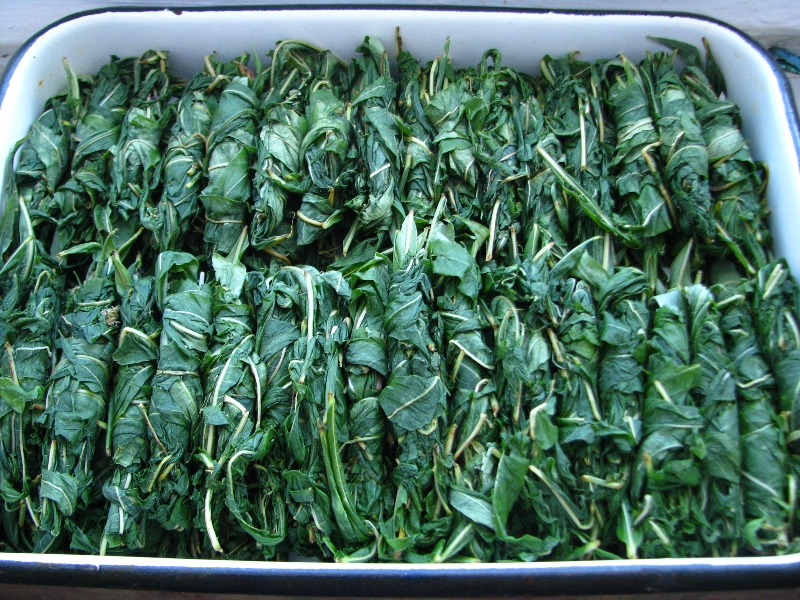Fireweed is a perennial herbaceous plant of the fireweed family. Tea made from its leaves is a very popular drink because it has a wonderful taste and healthy properties. 5 steps preparation and fermentation of fireweed.
Fireweed can be found on forest edges and sunny clearings, as well as on dried-up swamps, along ditches, and on roadsides. Fireweed is the first among other plants to cover forest fires and cuttings with its flowers.
Fireweed blooms for 30-50 days, from June to September, depending on the region and weather conditions. However, in the hot summer, flowering ends faster. As a rule, the raw materials for tea are harvested throughout July.
Small pink flowers are collected in loose panicles at the top of the stem. Blooming fireweed can be seen from afar, this place seems to be covered with a pink-lilac cloud, and the flowering itself is accompanied by a honey aroma.
It is from the leaves that a delicious and healthy tea is prepared, although the flowers can also be collected and dried since they have healthy properties. Fireweed flowers are used as a natural remedy in various collections and are also added to tea from the leaves to decorate and get a richer taste.
It is better to collect the leaves at the beginning of the flowering of the fireweed because then they contain the greatest amount of healthy substances.

Step 1. Harvesting leaves. 5 steps preparation and fermentation of fireweed.
Fireweed, like all herbs, is recommended to be harvested away from roads and industrial buildings, in forest clearings. It is better to do this in the morning. Try to tear the leaves from young plants – they contain more tannins.
It is most convenient to collect the leaves by holding the stem of the plant from above with one hand and holding the other down from the inflorescence to the middle of the stem. It is advisable not to collect the lower, largest leaves – they are needed to feed the plant itself. Do not take damaged and dry leaves, so that you do not have to sort out the raw materials after.
Step 2. Wilting
Spread the leaves in a layer in a warm place where direct sunlight does not fall, and leave for 10-12 hours. So that the leaves do not dry out, namely, they are dried, they need to be stirred from time to time. If the leaves compressed into a ball do not unfold when the palm is opened, then the wilting is finished. And now you can start fermentation.
Step 3. Preparation for fermentation
First, we need to destroy the structure of the leaves to release the juice. There are several main ways:
1. Twist the leaves by hand.
2. Press with a press or a rolling pin.
3. Twist the plant in a meat grinder (using a grate with the largest holes).
We will twist the leaves by hand because this way you can get a beautiful large-leaf tea. To do this, take 5-7 leaves and roll them with effort between the palms until the juice is released. At the same time, the leaves darken, as their structure is destroyed. As a result, we get a lot of twists of medium thickness.
If not all the leaves have darkened as a result of twisting, you can additionally knead them with a rolling pin, spreading the twists in one layer on a table or board.

Step 4. Fermentation. 5 steps preparation and fermentation of fireweed.
What is the fermentation of leaves for? Fermentation helps to convert insoluble substances contained in plant cells into soluble and easily digestible ones. If we brew tea from fresh or dried leaves, we will be able to get only a small part of the healthy substances contained in the plant in the drink. And the fermentation process allows you to make tea not only more saturated and fragrant but also as healthy as possible.
For fermentation, fold the twists of leaves into glass, enameled, or ceramic dishes. It is necessary to press, cover it with a lid, and then put it in a dark and warm place where the temperature is 71.6–78F. Fermentation of fireweed leaves lasts from 6 to 36 hours. The higher the temperature, the faster the leaves are fermented.
At a temperature below 59F, fermentation stops, and at 86F, part of the soluble fermentation products passes into an insoluble state, at the same time the pleasant aroma of tea is lost.
During fermentation, the color of the leaf mass becomes dark brown, and the smell changes from herbal to fruit. The longer we ferment the leaves, the more they will taste like strong black tea.
Open the lid from time to time: as soon as you like the aroma of tea, fermentation can be stopped. The main thing is to make sure that the leaves are not covered with mold. As a rule, on hot summer days, 14-20 hours are enough for fermentation of the leaves of the fireweed.

Step 5. Grinding and drying. 5 steps preparation and fermentation of fireweed.
Now cut the fermented leaves and spread them on the trays of an electric dryer or in a thin layer on a baking sheet. You can dry the crushed leaves in the dryer at a temperature of 131-140F for about two hours or an hour and a half in the oven at a minimum temperature with the door ajar.
While drying in the oven, periodically take out the baking sheet, mix the leaves, and check how dry they are. The leaves should break easily, but not crumble, turning into dust. In order not to over-dry the tea and keep more useful substances in it, you can keep the tea in the oven or dryer for 30 minutes at a temperature of 122-140F. Then dry the tea for a day at room temperature in a shaded place.
5-10 minutes is enough for brewing tea. Depending on the fermentation time and drying temperature, it can resemble both green and black tea in color. And the taste and aroma of the drink are light and pleasant, with fruity notes.
It is necessary to store tea in a dry and dark place, putting it in paper bags, cloth bags, or in glass jars with lids. The storage time is 2-3 years. Moreover, the taste and aroma of the drink is revealed only a month after production.

You can drink the drink throughout the day, even before going to bed, because it does not contain caffeine. Tea lowers blood pressure, and the nervous system, is healthy for anemia, and acute respiratory infections, and is often used as an analgesic and anti-inflammatory agent.
The leaves of the plant contain a large amount of vitamin C, as well as flavonoids, organic acids, tannins, carotenoids, pectin, and many macro – and microelements. A rare plant can boast of such a set of healthy substances!
If you have to travel far to prepare tea, then you can plant it in your garden by digging up several plants by the root. Plants are unpretentious, but it grows best in sunny areas. It grows quickly, heals the soil, and is an excellent honey plant. But so that the plant does not fill the entire garden, it is worth protecting the place allocated for it. And then it will become a healthy decoration for your garden.



